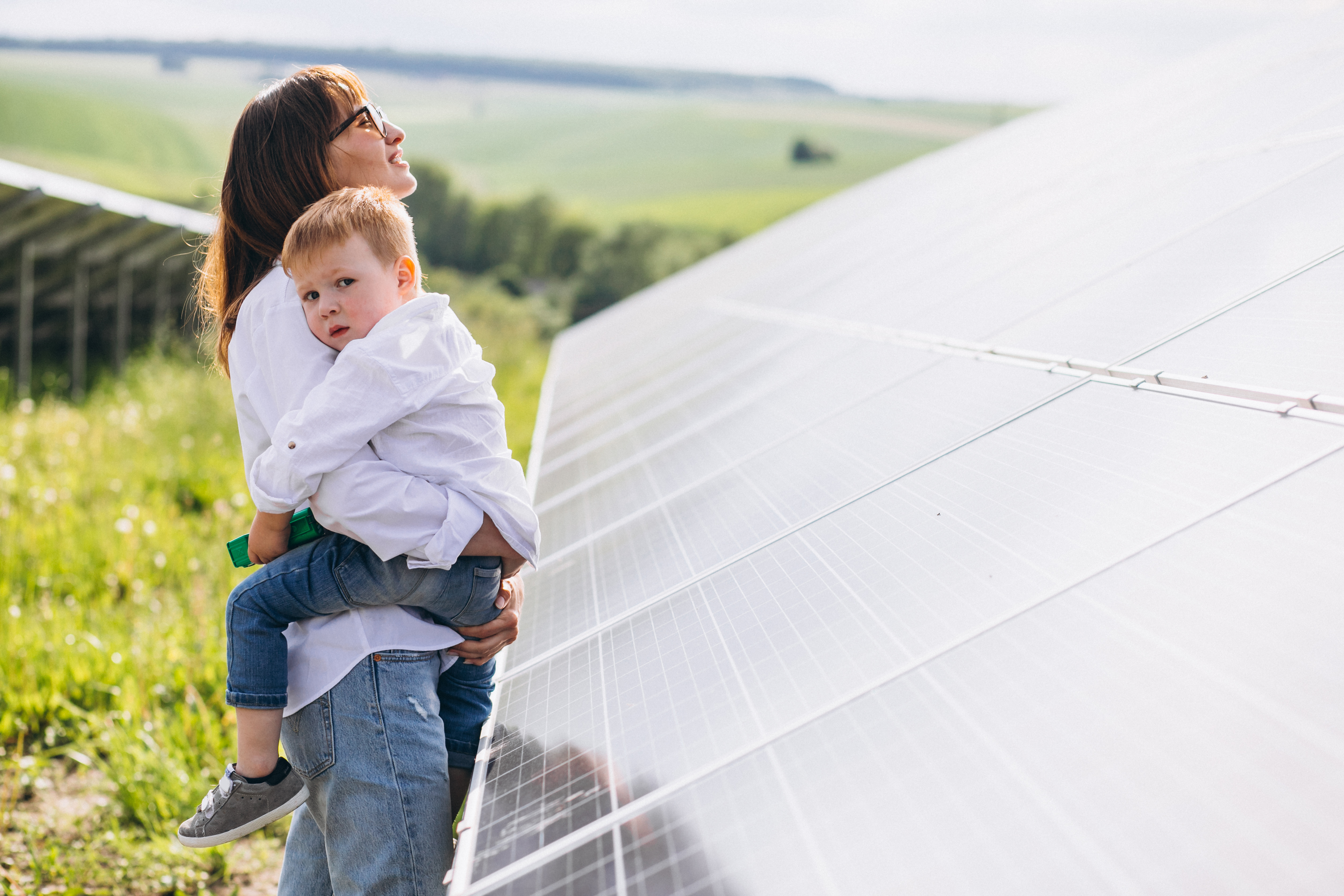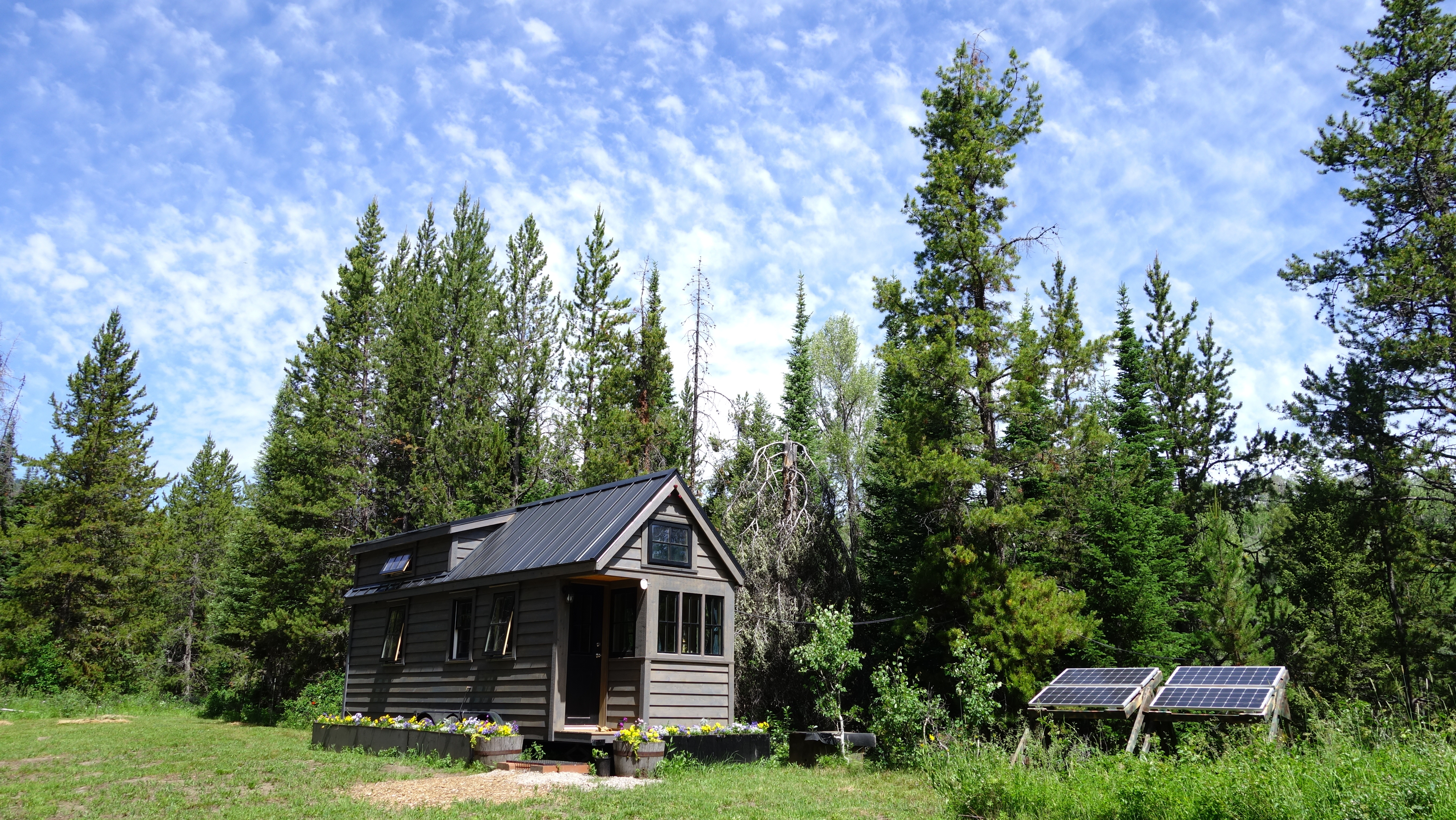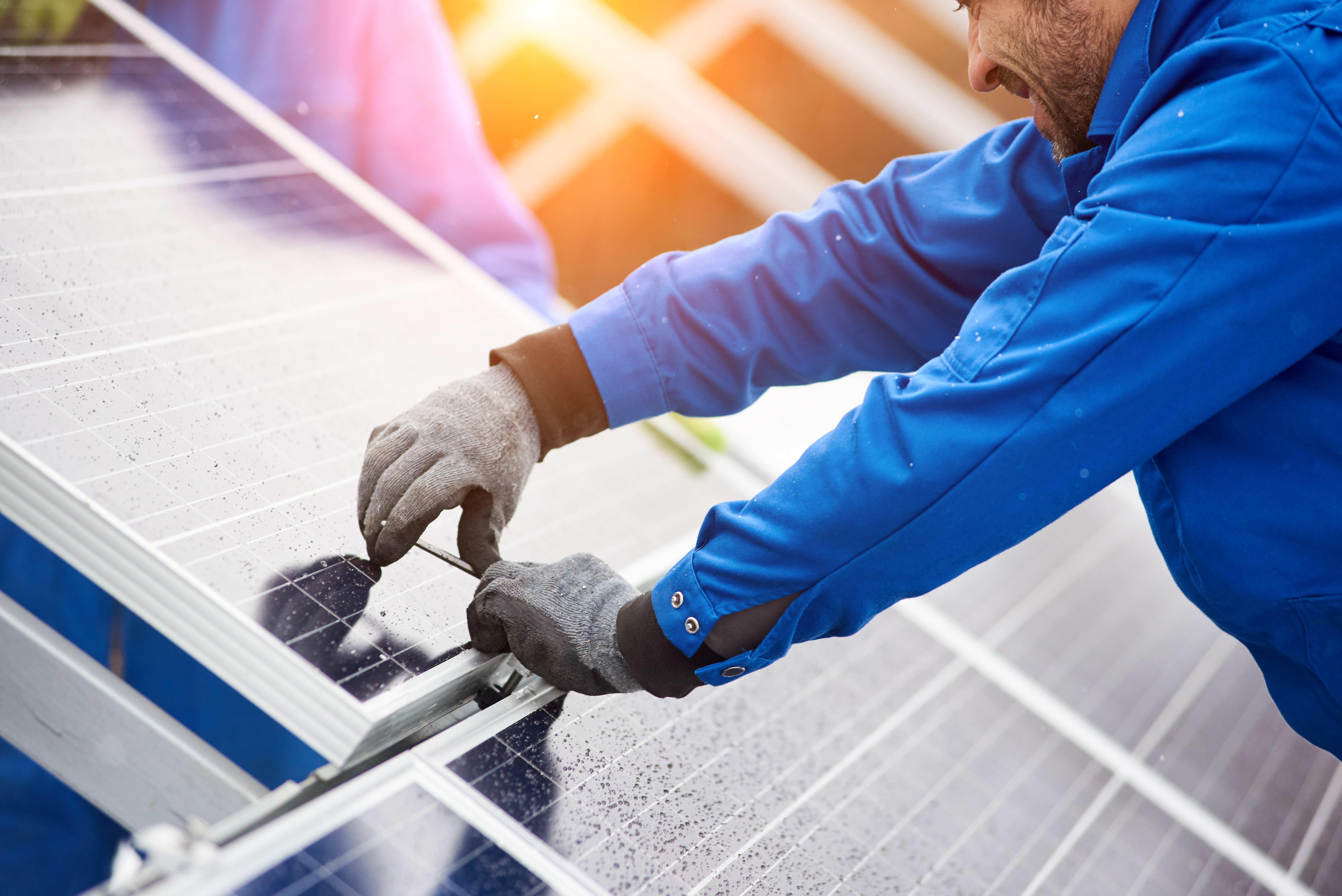How to Store Solar Energy at Home

As solar energy gets more and more popular across the U.S., it leaves homeowners with a question: what’s the best way to store solar energy? Putting up those solar panels is only half the battle; you’ll also need to figure out how to store solar energy so you can use it later. Will your solar power system work during a power outage or emergency? Can you use a standalone solar system for your power needs? These are questions to consider when evaluating your solar energy system. Check out our guide to solar energy storage options below.
How Solar Batteries Work
To understand solar batteries, it helps to understand the total solar power system. Roof-mounted or ground-mounted solar panels take in sunlight and an inverter then changes the solar energy into usable electricity for homes or businesses. Besides the inverter and panels, solar systems will also typically include equipment to mount the panels and a performance system that tracks the power produced.
As the solar panels start doing their job, aka collecting solar energy, it’s passed through the inverter so the electricity can power your home. In most cases, extra electricity made by your solar panels goes back into the grid. Then, you’ll typically get credit from your utility company for that excess electricity returned to the grid. You’ll see it in the form of a statement credit on your account.
So, where do solar batteries come into play? Well, it turns out that homeowners with solar systems don’t have to send that extra electricity back to the grid. They can use solar batteries to store that excess electricity and use it later. In fact, just like you can get special financial incentives from federal or state programs for installing solar panels, you can get additional rebates for installing solar batteries as well. The available rebates vary depending on your utility provider.

Types of Solar Storage
Want to learn more about how storage can help you save on your electric bill? There are three main types of solar storage that can help you can make a dent in that monthly expense.
Solar System Paired to the Grid
In a grid-paired system, your solar power is tied directly to the electrical grid. The primary purpose of this type of system is to lower your utility bill while staying attached to the main electrical grid.
However, this system has one main drawback: if the power goes out, so does your solar power system. When an inverter senses it’s disconnected from the grid, it is automatically turned off. This is an automatic feature of grid-tied systems because, during an emergency, workers repairing powerlines need to ensure there’s no electricity being fed into the grid.
If you try to use your solar system during a power outage, you’ll be out of luck. There’s no power available and no power stored for later use. However, if you have a grid-tied system, you can still add back up power later. Your inverter can be paired with a battery back-up inverter.
If you know you want to invest in solar but you’re not ready for the extra investment in solar batteries, the initial solar power system can still be a worthwhile investment. You can add backup options later.
Solar System Paired to the Grid with A Backup Battery
If you are ready to make solar upgrades, you might want to consider setting up your solar system with solar batteries.
With this type of system, your solar power system is tied to the grid, but you have a battery backup that holds onto any extra power your solar energy system generates. It’s sometimes called a grid-hybrid system. This type of solar power system is an especially good idea if you live in an area that experiences frequent power outages, or if you want to prepare for a worst-case-scenario. A system like this can also be an ideal choice if you would like to rely on your solar power during times of peak demand, which you can’t do with a system that’s purely tied to the grid.
With this kind of system, you’re still connected to the grid, but you can rely on your own solar power storage to get you through an outage and to reduce your energy use during peak periods. You can also back up power to maintain your “essential loads” such as lighting and appliances when your area is experiencing an outage.
The drawbacks of this system include both cost and efficiency issues. Compared to solar systems tied to the grid, hybrid systems are more expensive, and they are typically a little less efficient as well. There are also more system components to maintain. For example, the batteries in a hybrid grid system require a charge controller to protect them and a sub-panel, which is what holds the electric loads you want backed up. These components allow homeowners to keep their fridge powered when there’s an outage, for example.
Off-the-Grid Systems
Off-the-grid systems are ideal for those who can’t easily connect to the grid because of their geographic region or because of the cost of bringing in the grid power supply. In the majority of cases, it doesn’t make sense to live entirely off the grid.
The benefits of this kind of system include self-sufficiency and the ability to live in a remote location. You will have fixed costs for using your energy, and you won’t get a utility bill, which can be a pretty sweet deal. Off-the-grid systems are modular, so you can increase the capacity if your energy needs increase. This feature allows homeowners to start out small with a more modest budget but have the option of adding capacity to their solar power system if needed.
Because a solar power system is the only source of power for those living off the grid, many of these systems have multiple charging sources. You can add alternative energy upgrades like wind and perhaps a backup gas-powered generator for times when everything else fails. You’ll need to consider the weather and year-round conditions when setting up the system. For example, consider what happens when it snows and snow covers your solar panels? During times like those, you’ll need another way to charge your batteries.
A significant drawback of an off-the-grid system is that it might not qualify for available incentive programs. The system should also be designed to cover all of your energy demands — and hopefully, a bit more in case your energy needs increase. The planning required can be a big undertaking.
Another con involves the setup of off-the-grid solar power systems. They often have more components, which makes maintenance more complicated and possibly more expensive. The initial installation costs of these systems can be more costly as well.

Is Solar Storage Right for You?
In order to decide what type of solar storage system option is right for you, ask yourself and your solar installer these questions:
Cost: What solar storage system makes sense for my budget?
The cost for a total system depends on a variety of factors like how much electricity you use, the size of your home, your home’s location, and how many panels you choose to install. With that said, a ballpark range can be anywhere from $10,000 to $50,000 depending on the system size and any tax credits that you may qualify for.*Financing: How can I pay for my solar system?
Depending on your location, you may be eligible for PACE financing in addition to tax incentives, which vary by state. PACE financing provides qualifying homeowners with an option to pay for home energy upgrades over a longer-term and at a fixed rate.Maintenance considerations: What kind of maintenance is recommended and what is the typical cost?
Lifetime: How long do the batteries last and what do the typical warranties cover?
Energy impact: How much electricity will I save in terms of avoided grid power?
Emergency capacity: How long will I have power available in the event of an emergency?
Environmental impact: How much can I expect to reduce my carbon footprint?
Takeaways: Solar Storage for Homeowners
The allure of clean, renewable energy that saves money on your utility bill may entice you into spending money on a solar panel system. However, be sure to consider the secondary systems you may want in place such as a backup battery power source. In the event of a power outage or other emergency, batteries can provide the total or partial power you need. Need help paying for it? Ygrene offers solutions that can provide homeowners just like you with ways to pay for green energy upgrades.
*Figures based on ballpark estimates. To get a customized estimate for your solar project, contact one of Ygrene’s trusted contractors today.




